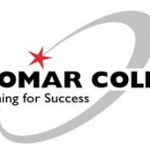- 行业: Education
- Number of terms: 12355
- Number of blossaries: 0
- Company Profile:
Founded in 1946, Palomar College is a public two-year community college in the city of San Marcos, located in north San Diego County, California. Palomar offers over 300 associate degree, certificate programs and is designated by the U.S. Department of Education as an Hispanic-Serving Institution ...
The New World is the Americas. The Old World is Europe, Asia, and Africa. This distinction is an ethnocentric reflection of the European origin of our modern sciences.
Industry:Anthropology
The neck-like opening at the lower end of the uterus that connects to the vagina.
Industry:Anthropology
The name given by advocates of the replacement model of modern Homo sapiens to the last presumed common ancestor of modern humans based on a comparison of mitochondrial DNA from around the world. She is presumed to have lived about 200,000 years ago.
Industry:Anthropology
The movement of heat from one object to another by direct contact. Example: the transmission of heat from your body to the chair on which you are sitting. See convection and radiation.
Industry:Anthropology
The movement of heat from on object to the surrounding fluid (either gas or liquid). Example: the transmission of heat from your body to water when you are swimming. See conduction and radiation.
Industry:Anthropology
The most well known stone tool making tradition of Homo erectus and early archaic humans. It first appeared about 1. 5 million years ago or somewhat earlier in East Africa and eventually spread throughout Africa, Southern Europe, and South Asia. The most diagnostic Acheulian artifact is the hand ax.
Industry:Anthropology
The most well known late archaic humans. They lived mostly in Europe and the Near East from 150,000 years ago or even earlier until at sometime after 28,000 years ago. There is an on-going debate as to whether they should be considered Homo sapiens or a distinct but related species. If they were members of our species, they were a different variety or race (Homo sapiens neanderthalensis). On the other hand, if they were different enough to be a distinct species, they should be considered to be Homo neanderthalensis.
Industry:Anthropology
The most recent geological era, dating from about 65. 5 million years ago to the present. It is the era in which the mammals flourished. It began as the last dinosaurs became extinct, at the end of the Mesozoic Era. Most of the placental mammals and all of the primates evolved during the Cenozoic.
Industry:Anthropology
The most commonly used calendar system in the world today. It is based on the older Julian calendar of the late Roman Empire but more accurately corresponds to the solar year of 365. 2422 days. The Julian calendar year is 365. 25 days. This is inaccurate by approximately 11 minutes a year. The result is that the Julian calendar is out of sync by one day every 131 years. The Gregorian calendar fixed this problem by changing the rules for leap years. In the Julian system, a day is added to the end of February every 4 years. In the Gregorian system a year is a leap year if it is divisible by 4 unless it is divisible by 100 but not by 400. This eliminates leap years periodically in order to keep the calendar more synchronized with the solar year. The Gregorian calendar was named after Pope Gregory XIII who officially approved it in 1582 A. D. England and its colonies did not adopt it until 1752.
Industry:Anthropology
The most advanced tool making tradition of the Neandertals. It was also shared by some other late archaic humans and early modern Homo sapiens. The Mousterian tradition was characterized by a progressive decrease in emphasis on core tools and a corresponding increase in the importance of flake tools--especially those made with the Levallois technique. The Mousterian tradition was sufficiently advanced over the earlier Acheulian Tradition from which it was derived to be placed into the Middle Paleolithic.
Industry:Anthropology
